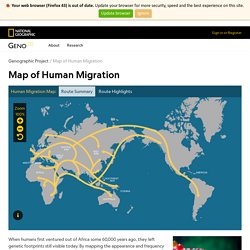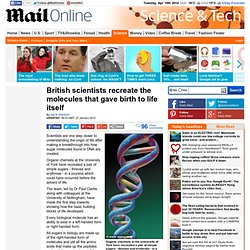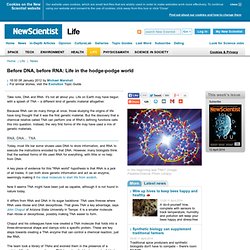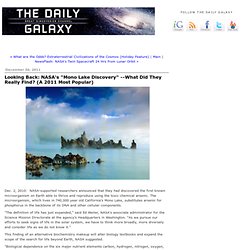

Understanding Evolution. Evolution: Online Lessons for Students: Activity 2- Evidence for Evolution WebQuest. Natural selection. From prokaryotes to eukaryotes. From prokaryotes to eukaryotes The complex eukaryotic cell ushered in a whole new era for life on Earth, because these cells evolved into multicellular organisms.

But how did the eukaryotic cell itself evolve? How did a humble bacterium make this evolutionary leap from a simple prokaryotic cell to a more complex eukaryotic cell? The answer seems to be symbiosis — in other words, teamwork. Evidence supports the idea that eukaryotic cells are actually the descendents of separate prokaryotic cells that joined together in a symbiotic union.
Evolution. Peppered Moth Simulation. Name:______________________________________________ Objective: Simulate changes in moth population due to pollution and predation, and observe how species can change over time.

Understanding Evolution. Evolution. Classification. Bacteria make major evolutionary shift in the lab - life - 09 June 2008. A major evolutionary innovation has unfurled right in front of researchers' eyes.

It's the first time evolution has been caught in the act of making such a rare and complex new trait. And because the species in question is a bacterium, scientists have been able to replay history to show how this evolutionary novelty grew from the accumulation of unpredictable, chance events. Twenty years ago, evolutionary biologist Richard Lenski of Michigan State University in East Lansing, US, took a single Escherichia coli bacterium and used its descendants to found 12 laboratory populations. The 12 have been growing ever since, gradually accumulating mutations and evolving for more than 44,000 generations, while Lenski watches what happens.
Profound change Mostly, the patterns Lenski saw were similar in each separate population. Indeed, the inability to use citrate is one of the traits by which bacteriologists distinguish E. coli from other species. Rare mutation? Atlas of the Human Journey - The Genographic Project.
When humans first ventured out of Africa some 60,000 years ago, they left genetic footprints still visible today.

By mapping the appearance and frequency of genetic markers in modern peoples, we create a picture of when and where ancient humans moved around the world. These great migrations eventually led the descendants of a small group of Africans to occupy even the farthest reaches of the Earth. Our species is an African one: Africa is where we first evolved, and where we have spent the majority of our time on Earth.
The earliest fossils of recognizably modern Homo sapiens appear in the fossil record at Omo Kibish in Ethiopia, around 200,000 years ago. Although earlier fossils may be found over the coming years, this is our best understanding of when and approximately where we originated. According to the genetic and paleontological record, we only started to leave Africa between 60,000 and 70,000 years ago. Early Primate Evolution: Time Scale of the Earth. A Brief History of Life.
Evolution: Change: Deep Time. Twist in the tail of eukaryotic origins - life - 19 December 2011. Complex life may have had parasitic origins.

New evidence suggests that the relatives of the mitochondria within our cells once had a tail, like many parasitic bacteria. Life on Earth is packaged into three domains: the simple bacteria, the archaea, and the complex eukaryotes that make up most of the life we see with the naked eye. The first eukaryotes appeared around 2 billion years ago. One popular theory suggests they did so after an immobile bacterium was ingested by an archaeon.
The bacterium somehow escaped being digested and instead formed a symbiotic relationship with its consumer. Different picture Nathan Lo at the University of Sydney in Australia and Claudio Bandi at the University of Milan, Italy, and colleagues think it is time to view this serendipitous encounter in a different light. That suggests that the bacteria might once have been mobile, like many parasitic bacteria. British scientists recreate the molecules that gave birth to life itself. By Nick Enoch Updated: 08:03 GMT, 27 January 2012.

Before DNA, before RNA: Life in the hodge-podge world - life - 08 January 2012. Take note, DNA and RNA: it's not all about you.

Life on Earth may have begun with a splash of TNA – a different kind of genetic material altogether. Because RNA can do many things at once, those studying the origins of life have long thought that it was the first genetic material. But the discovery that a chemical relative called TNA can perform one of RNA's defining functions calls this into question. Evolution. What Did They Really Find? (A 2011 Most Popular) Dec. 2, 2010: NASA-supported researchers announced that they had discovered the first known microorganism on Earth able to thrive and reproduce using the toxic chemical arsenic.

The microorganism, which lives in 740,000 year old California's Mono Lake, substitutes arsenic for phosphorus in the backbone of its DNA and other cellular components. "The definition of life has just expanded," said Ed Weiler, NASA's associate administrator for the Science Mission Directorate at the agency's Headquarters in Washington. "As we pursue our efforts to seek signs of life in the solar system, we have to think more broadly, more diversely and consider life as we do not know it. " This finding of an alternative biochemistry makeup will alter biology textbooks and expand the scope of the search for life beyond Earth, NASA suggested.
The bacterium, grown for months in a lab mixture containing arsenic, gradually replaced atoms of phosphorus as its energy source for atoms of arsenic. Arsenic-based Life Finding Fails Follow-up.